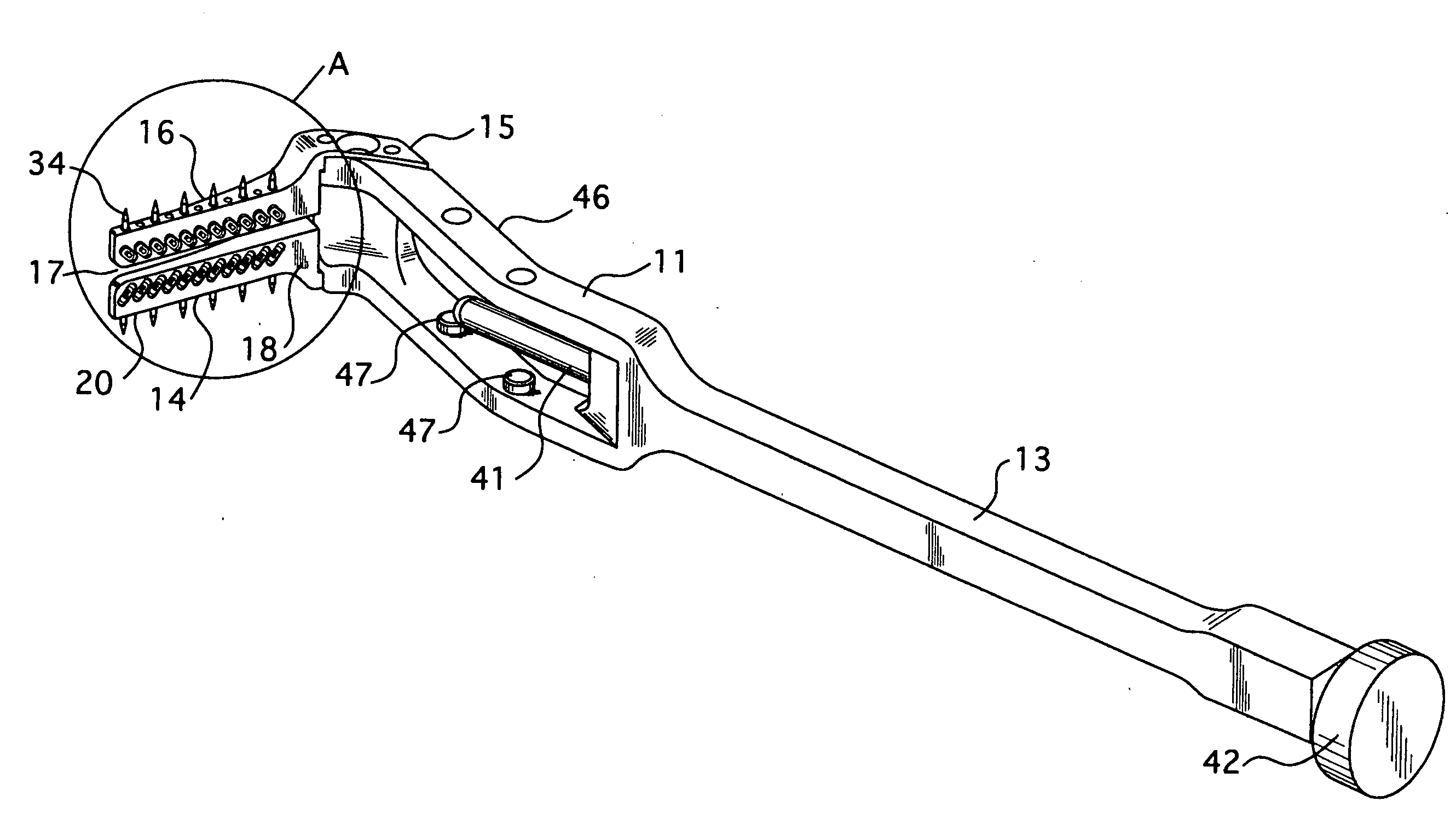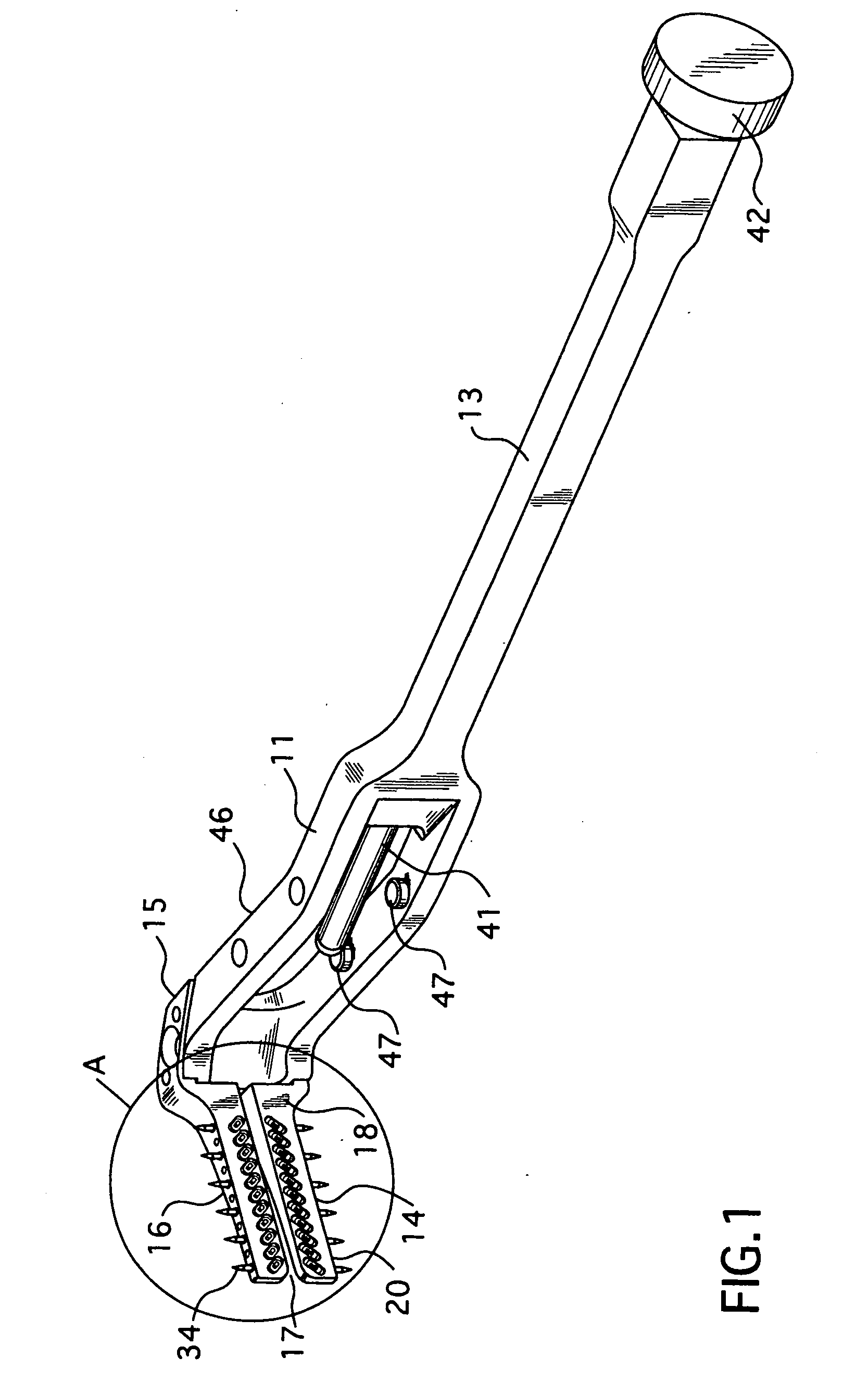Stapling apparatus for performing anastomosis on hollow organs
- Summary
- Abstract
- Description
- Claims
- Application Information
AI Technical Summary
Benefits of technology
Problems solved by technology
Method used
Image
Examples
Embodiment Construction
[0037]Referring to FIGS. 1 through 17, the anastomosis stapling apparatus 10 of the present invention is shown in its complete combined form in FIGS. 7 through 14. The stapling apparatus 10 is comprised of two separate combinable tools in the form of L-shaped clip retainer tool 11 and L-shaped staple retainer tool 12. Describing first the L-shaped clip retainer tool 11 shown in FIGS. 1 and 1A, the clip retainer tool 11 includes an elongated clip retainer handle 13 with a clip retaining foot 14 extending laterally from bottom distal end 15 of handle 13. Clip retaining foot 14 is comprised of a C-shaped clip jaw 16 which is positioned in a plane that is substantially transverse to the clip retainer handle 13 as illustrated in FIG. 1. C-shaped clip jaw 16 defines an organ exit gap 17 for removal of stapled hollow organ ends after stapling as will be explained in greater detail hereinafter.
[0038]Side face 18 of C-shaped clip jaw 16 provides an upwardly facing top face 22. Clip retainer ...
PUM
| Property | Measurement | Unit |
|---|---|---|
| Pressure | aaaaa | aaaaa |
Abstract
Description
Claims
Application Information
 Login to View More
Login to View More - R&D
- Intellectual Property
- Life Sciences
- Materials
- Tech Scout
- Unparalleled Data Quality
- Higher Quality Content
- 60% Fewer Hallucinations
Browse by: Latest US Patents, China's latest patents, Technical Efficacy Thesaurus, Application Domain, Technology Topic, Popular Technical Reports.
© 2025 PatSnap. All rights reserved.Legal|Privacy policy|Modern Slavery Act Transparency Statement|Sitemap|About US| Contact US: help@patsnap.com



